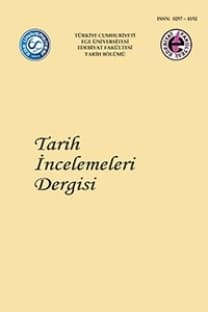Hint Askerlerinin Singapur'daki İsyanı (1915),
İngiliz İmparatorluğu’nun Uzakdoğu kolonilerinden biri olan Singapur I. Dünya Savaşı yıllarında İngiliz idaresine karşı girişilen en ciddi Hint askeri isyanlarından birisine şahit olmuştur. Tamamı Müslüman Hintlilerden oluşan birlik içerisinde, savaşın başlarından itibaren hissedilen hoşnutsuzluğu İngiliz yetkililer fark ederek tedbir amaçlı olarak birliğin yeri değiştirilmek istenmişse de isyan aniden patlak vermiştir. İsyanın oluşumunda Osmanlı Devleti ve Almanya’nın propaganda faaliyetleri ve bunun yanında Amerika’da örgütlenerek Uzakdoğu’nun pek çok limanına açılan Ghadr [Gadr] Partisi mensubu Hintli milliyetçilerin de çalışmaları etkili olmuştur. Buna rağmen isyanın işleyiş biçiminden isyancıların net bir amaç ve hedefleri ayrıca isyanı yönlendirecek ciddi liderleri olmadığı anlaşılmaktadır. İsyanı müttefik donanmaların desteği ile bastıran İngiliz koloni yönetimi, yakalanan Hintli askerleri sert bir biçimde cezalandırmıştır. Bu çalışmanın hedefi Türk ve İngiliz arşiv kayıtları ve ilk elden kaynaklardan faydalanarak isyanın amacını, arka planını ve sebeplerini ortaya koymaktır.
Indian mutiny in Singapore (1915)
Singapore, one of the colonies of the British Empire in the Far East, witnessed the most serious Indian mutiny against the British rule during the First World War. Although the British anticipated the discontent among the troops and attempted to relocate the unit, the mutiny occured suddenly. As well as Ottoman and German propaganda, the activities of Indian nationalists, who were members of the Ghadr party that had been formed in the United States and later spread to many ports in the Far East, were the main reasons of the mutiny. Despite this, it is clear from the way the mutiny occured that the mutineers did not have a clear aim or objective and they were not led by a decisive leader. Indian soldiers were severely punished in the aftermath of the mutiny which was quelled by the British colonial administration with the assistance of allied navies. This study aims to clarify the background, emergence and the reasons of the mutiny, using Turkish and British archival records and primary sources.
___
- A. Arşivler
- 1- Başbakanlık Osmanlı Arşivi, İstanbul, HR.SYS., 2336/1.
- 2- Cambridge University Library Archives, Cambridge, Hardinge Papers, 89.
- 3- The National Archives, Kew-London, FO, 371/2354.
- B. Süreli Yayınlar
- “1.000 Hindu Soldiers Shot at Singapore”, The New York Times, 13 April 1915.
- “An Emden Officer Escapes to Manila”, The New York Times, 24 June 1915.
- “French and Japanese Quell Hindu Mutiny”, The New York Times, 19 February 1915.
- “Hindus Killed 11 English”, The New York Times, 20 February 1915.
- “Native Soldiers Riot at Singapore”, The Guardian, 24 February 1915.
- “Riot at Singapore”, The Times, 24 February 1915.
- “Singapore Mutineers Executed Every Day”, The New York Times, 3 March 1915.
- “The Riot at Singapore. A Women’s Story”, The Times, 26 March 1915.
- “The Rioting at Singapore”, The Times, 24 February 1915.
- “Thirty-five killed in Singapore Mutiny”, The New York Times, 24 February 1915.
- From a New York Times Corresponder, “Vivid Story of Singapore Mutiny”, The New York Times, 2 May 1915.
- Harrison W. Smith, “Hindu Uprising a Myth”, The New York Times, 4 August 1915.
- C. Kitap Ve Makaleler:
- Brown 1948 Giles T. Brown, “Hindu Conspiracy, 1914-1917”, The Pasific Historical Review, Vol. 17, No. 3, s.299-310.
- Fraser 1977 Thomas Fraser, “Germany and Indian Revolution 1914- 1918”, Journal of Contemporary History, Vol. 12, No. 2, s.255-272.
- Keleşyılmaz 1999 Vahdet Keleşyılmaz, Teşkilat-ı Mahsusâ’nın Hindistan Misyonu, Atatürk Araştırma Merkezi Yay. Ankara.
- Harper and Miller 1964 R. W. E. Harper, Harry Miller, Singapore Mutiny, Oxford University Press, Oxford, New York.
- Reid 1967 Antony Reid, “Nineteenth Century Pan-Islam in Indonesia and Malaysia, The Journal of Asian Studies, Vol: 26, No:2, s.267-283.
- Sareen 1995 T. R. Sareen, Secret Documents on Singapore Mutiny 1915, Vol.I, Mounto Publishing House, New Delhi.
- ISSN: 0257-4152
- Başlangıç: 1983
- Yayıncı: Prof. Dr. Süleyman Özkan
Sayıdaki Diğer Makaleler
Chronica Maiora'da Moğol İmajı,
Attila'nın Oğlu Dengizik'in Devleti İhya Mücadelesi
Herodotos ve Yabancı Kültürler: Mısır Örneği
Yeni Asur Metinlerinde Geçen Ay İsimleri
Urartu Krallığı'nın Tarihi Coğrafyası Hakkında Yeni Öneriler
20. Ciepo Sempozyumu ( 27 Haziran-1 Temmuz 2012)
Hint Askerlerinin Singapur'daki İsyanı (1915),
